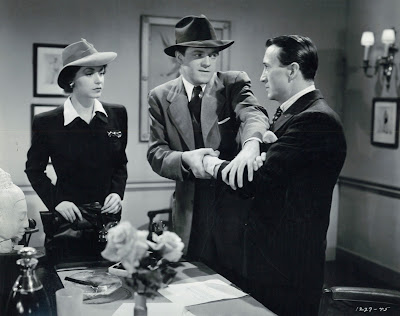When Sci-Fi Diet Was Strictly Starvation
The Time Travelers (1965) Is More Talk Than Travel
This was the sort of thing we'd go see when whatever suggested sci-fi or horror would do. Distributing AIP promised mutants and maidens. The Time Travelers sort of had these, but mostly it was chat, nee lecturing, by frost-haired John Hoyt, who's trying to save vestige of human life on the inevitably dying planet these time-trippers visit. Effects are OK, a few money-shots (if you could call any that in such a cheapie) reminiscent of Forbidden Planet. I hadn't seen The Time Travelers in over fifty years, so was eager for a rematch, that enabled by MGM's DVD where the pic is jammed on a single disc with three other genre obscurities. At least the transfer is new, and wide-screened faithfully to what we saw at the








































